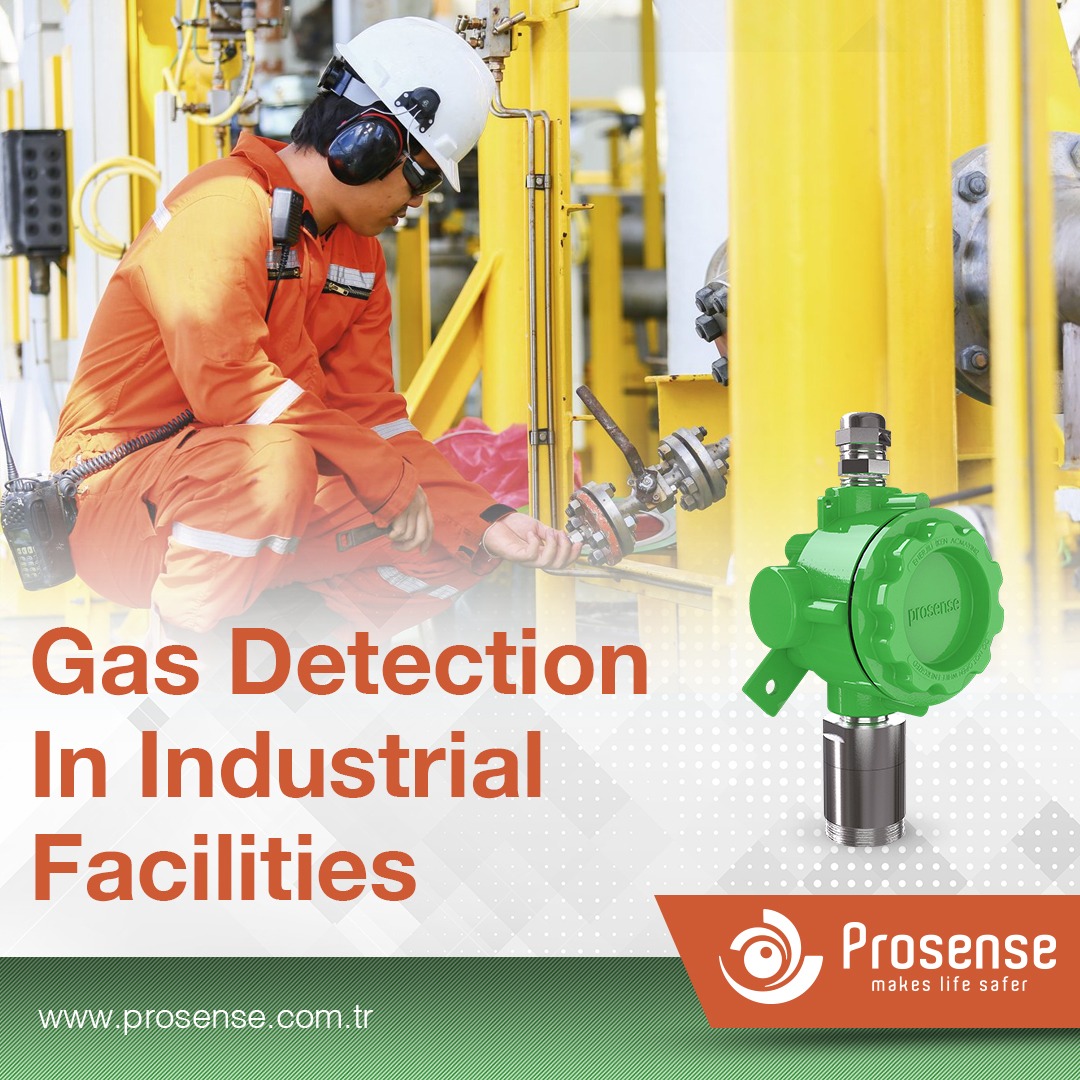Gas Detection In Industrial Facilities
It is mandatory to take precautions regarding the risks arising from the gases as the use of gases increase in many industries. Various gases used in the process create poisoning and fire/explosion hazards. Gas detection systems should be used to keep these hazards under control. A gas detection system must be able to detect all potential hazards and give timely warnings so that necessary action can be taken.
Detection technology
The performance of a gas detection system depends on the following factors:
-
The suitability of the selected detection technology.
-
Number and location of detectors.
-
environmental conditions.
For the system to be properly designed, system performance must be defined taking into account the potential hazards in each processing unit. In-depth knowledge of processes and sensing technologies are necessary for correct design. In addition, it is necessary to ensure that the mechanical and electrical properties of the detectors are suitable for the environment and location in which they will be installed. When deciding on technologies to use, it is important to evaluate the potential for false alarms. False alarms can trigger emergency shutdowns which will pose a problem for process continuity. Performance certified detection systems can eliminate or minimize the possibility of false alarms and unwanted activations.
Detector requirements
Various hazards may occur depending on the gases used, the characteristics of the gases and the way they are used in the facility. For example, H2S gas is also encountered while extracting natural gas and H2S is a particularly toxic gas. In this case, detectors should be selected to take into account both the danger of burning/explosion and poisoning. In addition, IR sensors should be preferred for flammable gases as H2S will adversely affect the life and performance of pellistor/catalytic sensors. All industrial facilities uses various systems for heating and cooling functions as part of the process within the plant. System design must include these additional systems by considering their characteristics. Generally, the danger of fire/explosion is considered to be the main problem in cooling. But gases used in these systems such as freon, pentane, ammonia and A2L class gases are all have different properties. Hence the technology and detection range to monitor these gases will be different. There are many potential leak points in a facility and the danger of poisoning, burning and explosion depending on them. It is necessary to use various technologies and detectors in accordance with the gas type and working principles of the devices used in the processes.
Redundant systems
If the failure of the system components used will affect safety or continouity, redundant use of these components may be an appropriate solution despite the additional cost. For example, if separate monitoring systems are used for each processing unit in a facility, malfunctions of these systems may not affect the entire facility. However, if the fire and/or gas detection system is managing the entire facility, the failure will result in loss of production throughout the facility. In addition, the geographical and environmental conditions of the facility should be taken into account when voting configuration defined in redundant usage. For example, if the direction of the air currents is known, two detectors can be placed at certain intervals (5m, 10m) in a section and they can be given an alarm by voting. In case of an outdoor environment, it may actually require a large gas cloud to reach out both detectors to generate an alarm and alarm level must be defined as less than 20% LEL for proper voting alarm generation.
Integration
In order for the gas detection system to work effectively, it must work in harmony and together with all the components that will ensure safety in case of danger. A good control system should be able to reliably detect hazards, give audible and visual alarms, and indicate the location of each hazard. Computerized automation possibilities that enable remote monitoring of facilities are also gaining importance.
Rules and standards
Wherever a gas detection system is installed in the world, it must be designed in accordance with all applicable rules and standards. The compatibility of the systems depends on the fact that the devices used are produced in accordance with these standards and that they have the necessary certificates.
Prosense produces the technologies required for the safety of the facilities by closely following the industry standards and industrial processes. Its products are documented by internationally respected institutions. Knowing that each facility has its own characteristics and acting with the knowledge that no facility is the same, it works to offer you the most accurate and competent solutions in every field.

